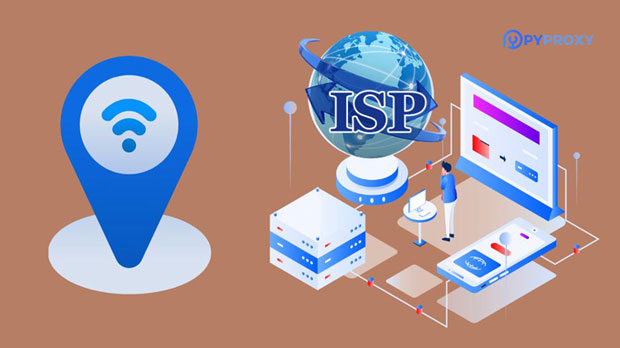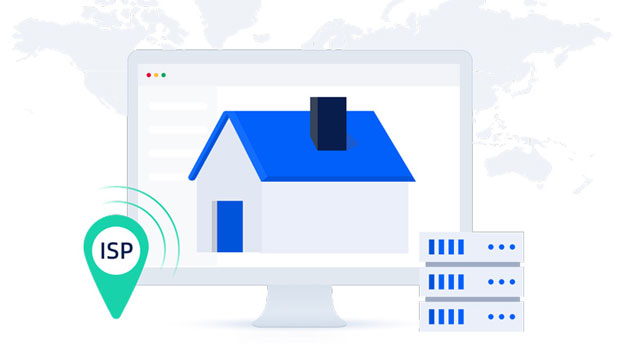When evaluating proxy services for business and personal use, PYPROXY and NetNut Proxy stand out as two popular options. While both services offer robust features for internet anonymity, web scraping, and bypassing geographical restrictions, they differ significantly in terms of configuration difficulty and user experience. PyProxy is known for its flexibility and adaptability, making it a go-to choice for users with technical expertise, while NetNut Proxy is designed to provide an easier, more streamlined experience for users looking for a hassle-free setup. This article will delve into the configuration complexity of each proxy service and compare the user experience they offer, highlighting the pros and cons of both to help you decide which one best suits your needs. Configuration Difficulty: PyProxy vs. NetNut ProxyThe configuration difficulty of a proxy service is crucial for users who are either new to the technology or have limited technical skills. PyProxy offers a flexible and customizable solution but requires users to engage with its setup process more deeply. This involves configuring the proxy through scripts and manual settings, making it suitable for advanced users who are familiar with coding and network protocols. PyProxy also offers API integration, which can be highly beneficial for developers and businesses that need to incorporate the proxy into complex systems.On the other hand, NetNut Proxy is designed with simplicity in mind. The setup process for NetNut Proxy is far more straightforward, allowing users to get started quickly. The system requires minimal manual configuration, with most of the work handled through a user-friendly interface. This makes NetNut Proxy a better choice for individuals and businesses that do not have extensive technical resources but still require reliable proxy services.Ease of Setup: PyProxy's Flexibility vs. NetNut's Streamlined ProcessOne of the key differences between PyProxy and NetNut Proxy lies in the ease of setup. PyProxy, due to its flexibility, allows users to configure the proxy in various ways, such as through command-line tools or custom scripts. This is beneficial for users who want granular control over their proxy usage but may prove overwhelming for newcomers or those who prefer a plug-and-play experience.NetNut Proxy, in contrast, is designed to be as user-friendly as possible. The setup process is guided and intuitive, requiring users to simply input their credentials and choose the desired proxy type. For those who are not technically inclined, this feature significantly reduces the complexity of using a proxy service. The streamlined setup also means that users can quickly start using the service without spending much time on configuration, making it ideal for businesses with limited technical staff.Scalability: PyProxy's Customization vs. NetNut's Limited FlexibilityScalability is an important consideration for businesses that plan to expand their proxy needs. PyProxy excels in this area due to its customizable nature. Users can adjust the proxy settings to fit their specific requirements, whether they are scaling up their operations or adjusting to changes in the business environment. PyProxy supports various configurations, including the use of rotating proxies, residential proxies, and specific geographic targeting. These features give businesses the flexibility to adapt the service to their growing needs.NetNut Proxy, while highly reliable, has less flexibility when it comes to scaling. Its predefined settings limit how much users can customize their experience. While this may not be a significant issue for small businesses or casual users, large enterprises or users with specific proxy needs may find these limitations restrictive. NetNut Proxy offers a more standardized approach to proxy services, which can be a benefit for users who prefer simplicity but a challenge for those who need more control.Proxy Rotation and IP Pool: PyProxy vs. NetNut ProxyAnother aspect that sets PyProxy and NetNut Proxy apart is the ability to rotate IP addresses and access a diverse IP pool. PyProxy allows users to configure proxy rotation according to their needs, offering them control over the frequency and type of IP changes. This is especially useful for activities like web scraping, where consistent IP rotation is needed to avoid detection. Users can also choose specific geographic locations for their IPs, which can be a significant advantage for certain types of web scraping or access to region-specific content.NetNut Proxy, however, has a more limited approach when it comes to IP rotation. While it offers a large pool of IPs, the rotation process is less customizable. This means that users who require frequent IP changes may find PyProxy a better option. However, for users who are not performing complex tasks like web scraping, the IP pool offered by NetNut Proxy is sufficient for most general proxy needs.User Experience: PyProxy's Customizability vs. NetNut's SimplicityThe user experience offered by PyProxy and NetNut Proxy is shaped by their configuration options and overall design. PyProxy's user interface may not be as polished as NetNut Proxy's, but it provides a higher level of customizability, which is a significant benefit for technical users. The learning curve associated with PyProxy is steeper, but for users who are comfortable with manual configuration and coding, it can be an incredibly powerful tool.NetNut Proxy, on the other hand, prioritizes simplicity and ease of use. Its user interface is intuitive, and the setup process requires little to no technical knowledge. This makes NetNut Proxy a great choice for beginners or businesses looking for a no-fuss solution. While it may not offer the same level of customization as PyProxy, its ease of use and reliable service make it a solid option for users who want quick and consistent proxy performance.Reliability and Support: PyProxy vs. NetNut ProxyReliability and support are critical factors when choosing a proxy service. PyProxy’s flexible nature and advanced configuration options come with the benefit of extensive support through developer communities and online forums. Users who encounter issues can often find solutions through community discussions or by consulting the documentation. However, for users who require direct customer support, PyProxy may not be as accessible as NetNut Proxy.NetNut Proxy, on the other hand, offers professional customer support to all users, ensuring that help is readily available whenever needed. This makes NetNut Proxy a reliable choice for users who require constant support or prefer a more hands-on approach to troubleshooting. The service is known for its high uptime and consistent performance, making it a dependable option for businesses that need a proxy service they can rely on.Cost and Value for Money: PyProxy vs. NetNut ProxyCost is always an important consideration when evaluating proxy services. PyProxy offers a highly flexible pricing structure, which allows users to pay only for what they need. This can be particularly beneficial for businesses that require a more tailored solution. However, due to its more complex setup and greater customization, the costs associated with PyProxy can sometimes be higher, particularly for smaller businesses or casual users.NetNut Proxy, while offering fewer customization options, provides a more predictable pricing model, which can be an advantage for businesses looking for fixed costs. The value for money with NetNut Proxy is generally considered to be good, particularly for users who do not need highly customizable features. Its simple setup, reliable performance, and professional support make it a solid option for those who prefer convenience over complexity.Conclusion: Which Proxy Service is Right for You?Both PyProxy and NetNut Proxy offer distinct advantages depending on the needs and technical capabilities of the user. PyProxy is the ideal choice for users who require flexibility, customization, and control over their proxy setup, particularly for advanced tasks like web scraping. Its complex setup process and higher learning curve may be a drawback for beginners, but for those with technical expertise, it provides an unmatched level of configurability.NetNut Proxy, on the other hand, offers a simpler, more user-friendly experience, making it perfect for businesses or individuals who prioritize ease of use and reliability. Its less customizable nature may limit some users, but its simplicity, reliability, and strong customer support make it an excellent choice for those looking for a straightforward proxy solution.Ultimately, the choice between PyProxy and NetNut Proxy comes down to the specific needs of the user—whether you value customization and control or prefer a hassle-free, reliable service.
Sep 09, 2025


































































